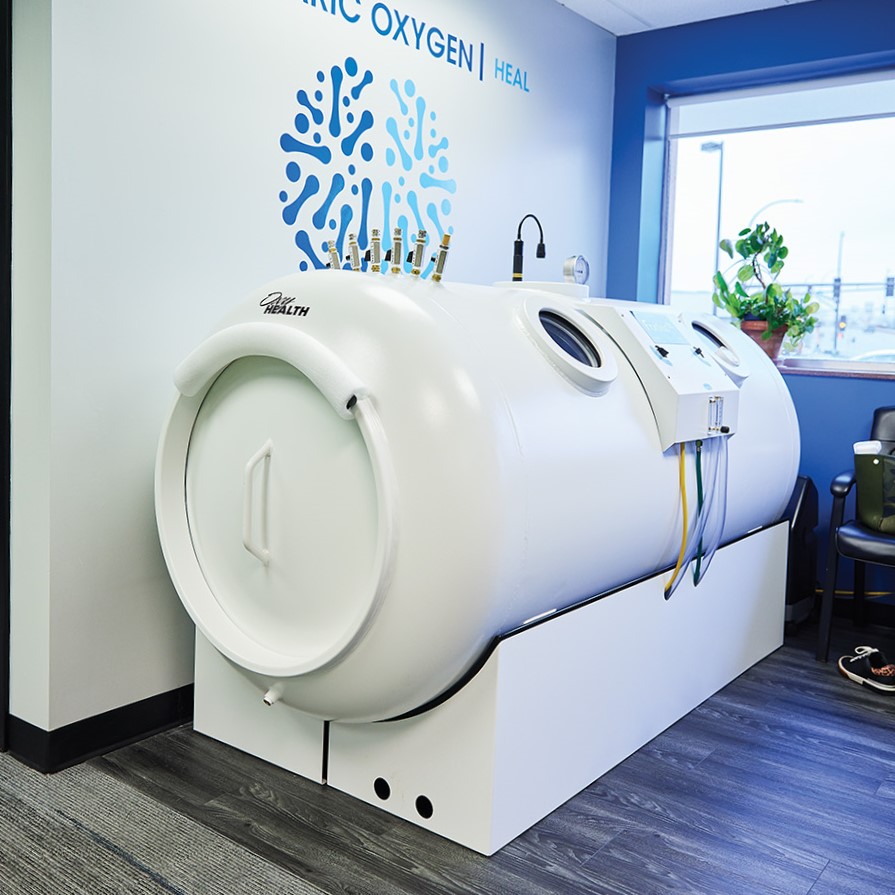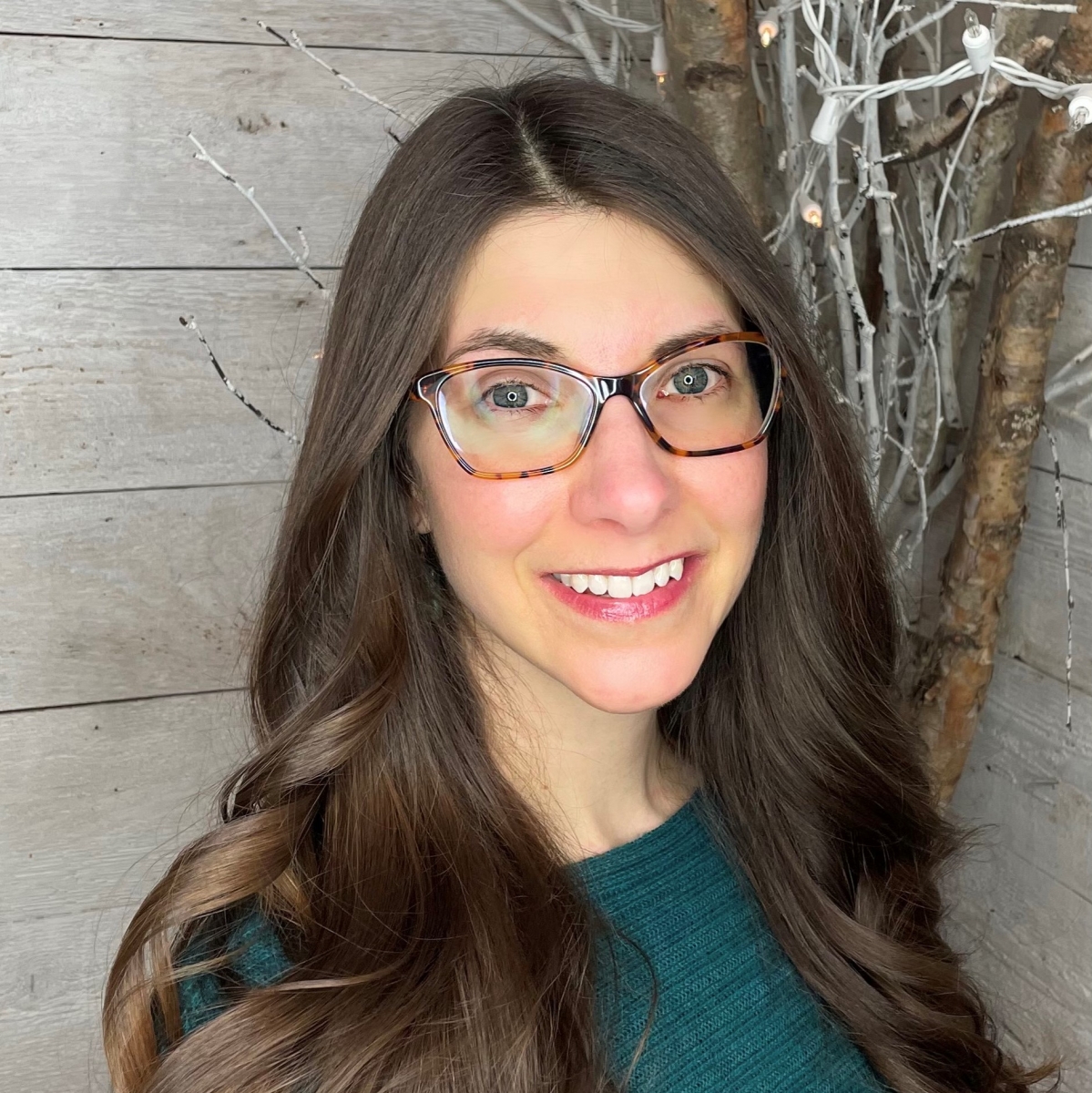
Lilly Zaborowski of Minneapolis spent years trying to find a health practitioner who could get to the root cause of her son’s severe eczema and offer more than steroid cream as a treatment option. After finally finding answers from a local holistic health care practitioner, she was determined to create a better way to more easily discover local alternative health resources. So, she began building out a searchable online directory and resource bank.
At the same time, Burnsville resident Alex Stalberger had begun a second career as an integrative nutrition health coach. She started hosting gatherings with other healers, practitioners and coaches to share knowledge, business resources and experiences. “What naturally ended up evolving out of that was this beautiful, natural, authentic referral network,” she says.
With a shared passion for the local wellness community, Stalberger and Zaborowski joined forces in June of 2019 to create Well Connected Twin Cities (WCTC). The goal was to help Twin Cities–area residents more easily find integrative wellness practitioners through their online directory and to share informational resources through their blog. They also created a platform for practitioners in the WCTC network to connect with each other, share resources and make connections. Although Zaborowski moved on to other business endeavors in 2022, Stalberger remains at the helm as the CEO.
Stalberger says anyone can use their network—whether they want to exclusively use holistic or alternative practitioners to meet their health needs or if they want to find someone who will work with their regular doctor in an integrative, complimentary way.
And what types of practitioners are part of the WCTC network?
“Right now, a practitioner that would qualify for Well Connected is one [who] believes in integrative care—meaning that they see their services not as the end-all for a specific ailment but as an option or a tool that can complement with others,” Stalberger says. “They are focused on collaboration over competition, and they are open to collaborative health.”
Do you have a New Year’s resolution to focus more on your health and wellness this year, but you’re not sure where to start? In the past few years, WCTC has expanded its offerings to include live events and virtual, on-demand classes and a weekly podcast—which Stalberger says is one of the easiest ways to dip your toe into the world of integrative medicine. You can also set up an integrative care guidance call with Stalberger, who can help direct you to modalities and practitioners who might be a good fit for your health needs and goals.
While practitioners in the WCTC network are located all over the Metro, a few are located right here in Edina. We’ll introduce you to these local integrative wellness practices, which offer unique approaches to health and healing. Since many integrative practitioners are limited in how they can accept insurance, we’re also including the cash-pay cost of each service.
Brenna Erickson, DC, Healthy Roots Chiropractic
When Brenna Erickson was in chiropractic school at Life Chiropractic College West in the San Francisco area, she was drawn to a specific chiropractic technique: Directional Non Force Technique® Chiropractic (DNFT).

While traditional chiropractic involves twisting, cracking, popping and applying sudden force to joints, Erickson was compelled by the idea of low-force, gentle-touch treatment available through DNFT. “I really love it because it’s very specific, it’s gentle and it gets results really quickly, which I like,” she says.
“I was trained more as a doctor of the nervous system and to look at how the brain and the body are connected and communicating to each other,” Erickson says. Her goal through DNFT is to ensure clear, efficient communication between the nervous system and body. She does this by breaking down a traditional chiropractic adjustment into 18–20 micro adjustments or micro thrusts. “That’s just a couple ounces of pressure, about as much as is comfortable pushing on your own eyeball,” she says. “If you take a regular or more mainstream chiropractic adjustment, that’s like a hammer going into a nail, and one hit tries to get it as far into the wood as you can. Mine is like little taps.”
Erickson says she was drawn to this technique “because that’s what I prefer in my system, and I think it serves a broader range of clients.” Specifically, high blood pressure and osteoporosis patients are often advised to not receive chiropractic care.
She says she can also more effectively treat those with sensitive nervous systems. “A lot of them are chronic pain patients or have autoimmune conditions or just think of themselves as ‘highly sensitive people,’” she says. By using gentle touches rather than forceful adjustments, the bodies of sensitive patients can better receive and respond to the treatments. Erickson also uses DNFT to treat migraines, those with surgical spinal fusion and sciatica, and women during pregnancy and postpartum.
“I really love working with migraine and headache disorders because there’s not a lot of people doing it,” she says. “I help people find what their triggers are and help raise their threshold to tolerance, so that they can have [fewer] headaches or migraines and … decrease the severity of them.”
Healthy Roots Chiropractic
Located in the Bhakti Wellness Center, 7550 France Ave. S. Suite 220; 612.367.7216
Facebook: Healthy Roots Chiropractic
Instagram: @migrainewhisperer
Cost:
Initial Visit: $300
Follow-Up Visits: $115
Jaron Faber, DC, MS, and Jordan Shilts, DC, Statera Health
While Jaron Faber and his business partner Jordan Shilts, are both chiropractors, their Edina-based practice, Statera Health, offers much more—including functional medicine programs, LED light therapy and hyperbaric oxygen therapy.

Hyperbaric Oxygen Therapy
Two hyperbaric oxygen chambers are the practice’s main referral mechanism. While hyperbaric oxygen therapy can be used to treat a number of ailments, Faber says they’re currently treating a lot of patients with long-COVID-19 symptoms. “Some people [have] had symptoms for over the last year, and they’re struggling with either fatigue or brain fog or maybe still loss of taste and smell,” he says, noting they’ve had success treating these symptoms.
Beyond COVID, Statera patients use the oxygen chambers to help treat chronic fatigue, inflammatory bowel disease, neuropathy, Lyme disease, diabetes, inflammation, concussions and traumatic brain injuries. It’s also used to aid in surgical recovery, injury recovery and cognitive performance. “In the U.S., we only recognize 14 different conditions that are treatable [with hyperbaric oxygen therapy] and reimbursable by insurance. But internationally, there’s over 150 different conditions,” Faber says.
Sessions last 60–90 minutes, and during that time, patients wear an oxygen mask in the chamber, so they’re breathing 100 percent oxygen. The chamber is also pressurized, which increases the pressure of the oxygen gas. Faber says this “allows [oxygen] to get to other tissues in the body, which basically accelerates healing at a cellular level.”
Faber and Shilts got certified in hyperbaric oxygen therapy within a functional medicine setting in 2022, which allows them to offer treatments at higher pressures.
 One of the hyperbaric oxygen chambers at Statera Health in Edina.
One of the hyperbaric oxygen chambers at Statera Health in Edina.
LED Light Therapy
In a different corner of Statera, you’ll find an LED light therapy bed, which looks like a high-tech tanning bed—but it serves an entirely different purpose.While it’s most commonly known as red light therapy, and the proper terminology is “photobiomodulation,” the Statera team markets it as LED light therapy not only because it’s easier to pronounce, but because they incorporate more than just the red light spectrum. The light bed at Statera offers green light, red light and infrared light.
“This specific machine was designed by one of the professors at Harvard [University] who is a lead researcher in light therapy,” Faber says. “We’re one of four clinics in the world with this model … with this one you can start targeting different tissues [and] different symptoms.”
But it’s not a new technology, overall. “Light therapy has been well known for over 100 years. Back in 1908, a Nobel Prize was given out for light therapy and its effects on lupus,” Faber says, noting it’s also very well-researched, with hundreds of peer-reviewed journal articles on LED light therapy documented on the research database PubMed.
Faber says most of their patients use light therapy to treat skin issues, but the uses for this treatment are much broader. “Green light is really good for a lot of different skin conditions, from acne to eczema, psoriasis or even wrinkles because of collagen production effects,” he says. “The red and infrared is what’s best for pain and inflammation, increasing blood flow, dilating blood vessels, restoring hormone balance, restoring circadian rhythms, the list goes on.” Sessions last anywhere from 10–20 minutes.
Light therapy and hyperbaric oxygen therapy can even be used together, with one treatment following the other. The complementary nature of these two therapies is “something that sets [Statera] apart from the other hyperbaric clinics in the area,” Faber says. And the practice’s holistic approach to functional medicine and chiropractic care also complement these therapies.
“Putting all that together, we can accelerate healing,” he says. “And putting the body in the right environment, you can accelerate it even further. So that’s the purpose of the light therapy [and] the oxygen therapy.”
Integrative Massage and Axon Movement (run by Edina Magazine columnist Tim Borowski) also operate out of the Statera Health space.
Statera Health
4820 W. 77th St.; 952.213.6386
Facebook: Statera Health
Instagram: @staterahealth_edina
Cost:
Hyperbaric Oxygen Therapy:
$150 per hour
LED Light Therapy:
$40 per session
Cost-saving packages are available
Mallery Hammers, Unlock Healing
Mallery Hammers, LICSW, first interacted with Quantum Neuro Reset Therapy (QNRT) as a client, while working as a social worker. The therapy was so impactful she trained to become a practitioner on the side and has since shifted to working full-time at her Minneapolis-based practice, Unlock Healing.

“I was looking for an alternative … emotional mental health support with some things that were currently going on in my life,” Hammers says. “I called my acupuncturist, who actually recommended that I do QNRT, so that's how I stumbled across it.” Through a year of treatments, Hammers says she “saw a lot of shifts and changes” within herself. “And then it was like, my gosh, I [have] to be able to … share it with the world.”
QNRT is a combined brain and body therapy that was developed by Dr. John Turner in the 2000s, based around the principle that the brain and nervous system control all of a body’s functions. Turner defines QNRT as “a proprietary protocol designed to initiate a quantum shift in the nervous system by resetting the brain's response to emotional triggers for both past and present emotional trauma and stress.”
Hammer expands on this, saying, “When we have unidentified trauma and stress locked and stored in the body, that can lead to emotional, mental, spiritual [and] physical breakdown.”
On a tangible level, this looks like a client coming in for a series of “reset” treatments, which involves kinesiology-based muscle response testing, brain activation through light and eye movement and exercising cranial nerves through the five senses. “I like to describe it as physical therapy for the brain and the nervous system,” Hammers says. “We do all that to really repattern the brain's response; we repattern to create new neural pathways,” which she says helps promote a healthier response to stress, emotional wounds and traumatic events.
While new neural pathways and healthier stress responses may seem difficult to quantify, Hammers says after treatment, she’s had clients share that they feel less reactive and more grounded, even in the midst of stress, along with improved sleep quality. She says those results are due to the way QNRT works on “taking the charge off the limbic system [in the brain] and calming the nervous system down so we can increase that window of tolerance … and operate from a much more regulated state.”
Hammers notes that QNRT can be used in unison with a variety of other integrative health modalities, including talk therapy. But it can also be used on its own; she often sees clients who have either hit a plateau with talk therapy or those who aren’t ready to verbally delve into a traumatic event but need to work through it on a neuro physical level, since QNRT involves very little talking.
When asked what drives this work, Hammers shares a passion that developed first in her social work career. “My mantra for Unlock Healing is ‘When we heal individually, we heal collectively,’” she says, adding that her mission through practicing QNRT is to help people heal and grow so they can show up in healthier ways for themselves and others.
Unlock Healing
4450 Nicollet Ave., Mpls
Instagram: @unlockhealing
Cost:
Initial Visit: $140
Follow-Up Visits: $120
Phyllis Jaworski, Sacred Ibis Botanicals
Phyllis Jaworski is an herbalist and women’s hormonal health specialist who focuses on helping balance hormones to mitigate and heal menstrual pain. Her practice is based in Hudson, Wisconsin, but she serves clients across the Twin Cities Metro, and sees many of them virtually.

After spending the first decade-plus of her career as a scientist, Jaworski decided to pursue a Master of Herbalism Certification after experiencing the positive effects herbal remedies had on her body. Her menstrual cycle had grown increasingly painful and debilitating after the birth of her second child. “I had very, very painful menstrual cycles. I was exhausted, my hair was falling out, [I had] very, very bad insomnia,” Jaworski says. Her doctor said she had all the signs and symptoms of endometriosis and was told surgery was the only way forward.
Feeling like she was out of options from Western medicine, Jaworski says, “I went to a local herbalist [and] within three months on the regimen I was pain free, my energy was back and I had this new set of wisdom.”
After discovering so many other women have experiences similar to her own, Jaworski decided to make balancing hormones and treating menstrual pain the niche of her practice, Sacred Ibis Botanicals. (Although she does see clients for other complaints.) Her goal is to support other women and help them avoid medication and drastic medical procedures while mitigating chronic symptoms. “It's an interesting niche in encouraging women to put the work and the time into themselves; to give themselves the care that they need now,” she says.
When getting started, Jaworski focuses on discovery—listening to her new clients to get their full back story. This not only involves health and symptom history, but she also tries to understand if there are any emotional blockages or negative mental patterns at play.
“The biggest piece for me—what I see with my clients—is the emotional blockage,” Jaworski says, noting this often looks like a negative emotional pattern. She sees this as an energy issue. “Every part of us is energy; every atom in our body is moving its energy. And so it only makes sense that we need to have energy flow through us.” But she finds that negative thought patterns cause energy blockages, which she believes ultimately manifest as disease in the body. “There [are] so many root issues that need to be looked at in order to fully support someone into healing,” she says.
Jaworski also looks for tell-tale signs and symptoms. “There are so many different types of hormone imbalance-related [issues], like PCOS, fibroids, endometriosis, and they each have their own signature,” she says. Those “signatures” indicate which hormone is out of balance and what is causing it, which she says gives you a place to start with symptom relief and healing.
Jaworski then focuses on symptom relief—though she points out that, “As an herbalist, I am not allowed to treat, diagnose [or] cure.” However, she is able to make suggestions on herbs and supplements to take based on an individual’s symptoms. The menstrual cycle has four phases—menstruation, follicular, ovulation and luteal. “Moving through those four phases and seeing what the symptoms are usually gives all the clues that you need to know as far as deficiencies [and] whether a hormone is out of balance,” Jaworski says. However, for clients who want to see their hormone, vitamin and mineral levels on paper, she does work with clinics and practitioners to request lab work.
Symptom relief involves developing an individualized regimen of herbal tinctures, teas and infusions, as well as vitamins and supplements. Jaworski notes that while hormone imbalances play a role in chronic menstrual pain, she finds nutritional deficiency is often at play as well—sometimes even causing hormonal issues. She says that concentrated herbs, in tinctures and infusions, can help fill some nutritional gaps while also addressing symptom relief.
From there, Jaworski works with clients on supporting energy blockages and practicing affirmations to address the emotional aspect of symptoms. To do this, she creates flower essences for clients. According to Healthline, flower essences are, “ … believed to contain the vibrational energy of flowers, which can improve negative thoughts and emotions.” Jaworski uses them as a “behind-the-scenes” energetic support to affirmations and developing positive thought patterns. “Replacing those negative thought patterns with positive ones … can help move out of that long-held negative belief and move into positive ones,” Jaworski says, “so that when we are all done working together, there's a new pattern.”
Sacred Ibis Botanicals
1600 Maxwell Drive, Suite 7, Hudson
Facebook: Sacred Ibis Botanicals
Instagram: @sacred_ibis_botanicals
Cost:
$800* for four sessions, including initial intake session
*Costs for herbs and supplements are additional. Jaworski also offers a complimentary 30-minute Healthy Hormone Strategy Session to see if working with her is the right fit.
Want to learn more about each of these practitioners and their practices? Check out each of their interviews on the Well Connected Twin Cities podcast.









